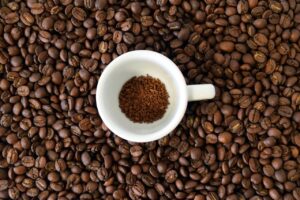My Pressure Cooker Only Has One Setting: Introduction
In this article, we are going to explore the concept of pressure cookers and their various settings. Many of us may ask “Why My Pressure Cooker Only Has One Setting?” or maybe has an additional pressure setting, but what does this actually mean for our cooking? Join us as we unravel the mysteries behind these settings and discover how they can enhance our culinary adventures. Get ready to unlock the potential of your pressure cooker and take your dishes to a whole new level of deliciousness!

Understanding Pressure Cookers
What is a pressure cooker?
A pressure cooker is a versatile kitchen appliance that uses steam, pressure, and heat to cook food quickly. It consists of a sealed pot with a locking lid and a valve that controls the pressure inside. Pressure cookers are known for their efficiency and ability to reduce cooking times significantly.
How does a pressure cooker work?
When food is cooked in a pressure cooker, the steam created inside raises the pressure, which in turn raises the boiling point of water. As the boiling point increases, food cooks faster, resulting in shorter cooking times. The sealed environment also helps retain flavors, nutrients, and moisture, producing tender and flavorful dishes.
Benefits of using a pressure cooker
Using a pressure cooker offers several advantages. Firstly, it saves time by reducing cooking times up to 70%. This is especially beneficial for busy households or individuals who don’t have a lot of time to spend on meal preparation. Additionally, pressure cookers are energy-efficient, as they require less heat and cooking time. They also retain more nutrients and flavors compared to traditional cooking methods. Lastly, pressure cookers are versatile and can be used for various cooking techniques, including steaming, braising, boiling, and even baking.
Different Pressure Cooker Settings
Single pressure setting
Some pressure cookers have only one pressure setting, often referred to as high pressure. This means that the pressure inside the cooker remains constant throughout the cooking process. While single pressure setting cookers are still effective and can cook a wide variety of dishes, they offer limited flexibility compared to those with multiple pressure settings.
Multiple pressure settings
On the other hand, pressure cookers with multiple pressure settings give users more control over the cooking process. These cookers allow you to choose between different pressure levels, such as low pressure, medium pressure, and high pressure. Having multiple pressure settings offers more versatility, as it enables you to adjust the cooking time and temperature according to your specific recipe requirements.
Understanding pressure levels
Pressure cookers typically operate at either 10 psi (pounds per square inch) or 15 psi. The pressure level affects the cooking time and the tenderness of the food being prepared. A higher pressure of 15 psi cooks food faster, while a lower pressure of 10 psi is ideal for delicate ingredients or recipes that require longer cooking times. It’s important to understand the pressure levels and their impact on cooking to achieve the desired results.
My Pressure Cooker Only Has One Setting: Implications
Limited cooking options
With a single pressure setting, the cooking options are somewhat limited. While most recipes can be prepared using high pressure, certain delicate ingredients or recipes may require lower pressure levels. Single pressure setting cookers may not be suitable for dishes that require precise control over the cooking process, such as custards or delicate seafood.
Efficiency and convenience
Despite the limited cooking options, single pressure setting cookers are still efficient and convenient to use. The constant high pressure allows for quick cooking times and consistent results. These cookers are perfect for everyday cooking, as they can easily handle a wide range of recipes, including soups, stews, beans, and meats.
Safety considerations
Using a pressure cooker with a single pressure setting requires proper attention to safety considerations. The high pressure can lead to the risk of overcooking certain dishes and potentially causing food to become mushy. It is crucial to carefully monitor the cooking process and follow the recommended cooking times to avoid any safety hazards.
Utilizing a Pressure Cooker with Extra Pressure Setting
Enhanced cooking options
Pressure cookers that have an extra pressure setting offer greater cooking flexibility. The additional pressure option, usually a lower pressure level, allows for cooking delicate ingredients or recipes that require longer cooking times. This extra pressure setting expands the range of dishes you can prepare in your pressure cooker, giving you more options in the kitchen.
Adapting recipes
Having an extra pressure setting opens up opportunities to adapt recipes and experiment with different cooking techniques. You can adjust the cooking time and pressure level according to your preference and recipe requirements. This adaptability makes it easier to achieve desired textures and flavors when preparing a variety of dishes.
Factors to consider when using higher pressure
While the extra pressure setting can be advantageous, it’s important to consider a few factors when opting for higher pressure levels. Some delicate foods, such as fish or certain vegetables, may become overcooked or lose their texture if exposed to high pressure for too long. It’s advisable to adjust the cooking time accordingly to prevent undesirable results.

Determining the Pressure Setting of Your Pressure Cooker
Reading the manual
To determine the pressure setting of your pressure cooker, it’s essential to refer to the instruction manual provided by the manufacturer. The manual will provide detailed information on the different pressure settings available and how to adjust them for various recipes. Reading the manual thoroughly ensures that you understand the capabilities and limitations of your pressure cooker.
Checking pressure release valves
Pressure cookers are equipped with pressure release valves that regulate the internal pressure during cooking. By observing these valves, you can gain insight into the pressure settings of your cooker. For example, if your pressure cooker has an extra pressure setting, there may be specific indicators or functions associated with it. Understanding how these valves operate will help you make informed decisions about your cooking process.
Consulting manufacturer or customer support
If you still have questions or uncertainties about the pressure setting of your pressure cooker after reading the manual and observing the pressure release valves, it’s advisable to consult the manufacturer or customer support. They can provide accurate and reliable information regarding the pressure cooker’s settings and guide you on how to best utilize your specific model.
Adjusting Cooking Times and Recipes for Different Pressure Settings
Understanding the impact of pressure on cooking time
The pressure setting of your cooker has a significant impact on the cooking time required for various recipes. Higher pressure levels will generally reduce the cooking time, while lower pressure levels may require longer cooking times. Learning how different pressure levels affect cooking times will help you adjust your recipes accordingly and ensure your dishes are perfectly cooked.
Adapting recipes for higher or lower pressure
When using different pressure settings, it’s essential to adapt your recipes to account for the changes in cooking time and tenderness. For higher pressure levels, you may need to decrease the cooking time to prevent overcooking. On the other hand, lower pressure levels may require an increase in cooking time to achieve the desired tenderness. Experimentation and practice are key to mastering recipe adaptations for different pressure settings.
Experimentation and learning
Utilizing different pressure settings provides an opportunity for experimentation and learning in the kitchen. Try adapting your favorite recipes using different pressure levels to discover the optimal cooking times and textures. Take notes and make adjustments as needed, creating your own repertoire of delicious pressure cooker dishes.

Safety Precautions and Recommendations
Awareness of safety features
When using a pressure cooker, it’s crucial to be aware of the safety features and follow recommended guidelines. Familiarize yourself with features such as the locking lid, pressure release valves, and steam release mechanisms. Understanding how these safety features work will ensure a safe and enjoyable cooking experience.
Proper maintenance and regular inspections
Regular maintenance and inspections are essential for the safe and efficient operation of your pressure cooker. Clean the cooker after each use, regularly check the sealing ring for any signs of wear, and inspect all parts for any damage. Proper maintenance helps prolong the lifespan of your pressure cooker and ensures that it functions optimally.
Following manufacturer’s instructions
To ensure the safety and proper functioning of your pressure cooker, it’s essential to follow the manufacturer’s instructions carefully. The instructions will provide specific guidelines for operating the cooker, cleaning it, and addressing any potential issues. Always refer to the manufacturer’s instructions for the most accurate and reliable information.
Considering Upgrading to a Multi-Setting Pressure Cooker
Expanded cooking options
Upgrading to a multi-setting pressure cooker offers expanded cooking options and culinary possibilities. With the ability to adjust pressure levels, you can explore a wider range of recipes and experiment with new cooking techniques. Whether you enjoy delicate seafood dishes or hearty stews, a multi-setting pressure cooker allows you to prepare them all.
Increased versatility
A multi-setting pressure cooker provides increased versatility in the kitchen. It allows you to fine-tune your cooking process according to different ingredients and recipes, ensuring the best results every time. The ability to choose between high, medium, and low pressure levels expands your cooking repertoire and enables you to tailor your meals to your preferences.
Factors to consider before upgrading
Before upgrading to a multi-setting pressure cooker, it’s important to consider a few factors. Evaluate your cooking needs and determine whether the additional pressure settings will significantly enhance your culinary experience. Additionally, consider the budget and space constraints, as multi-setting pressure cookers may be more expensive and larger in size compared to single-setting counterparts.
Common Issues and Troubleshooting
Food consistently undercooked
If your food consistently turns out undercooked in a pressure cooker, it could be due to insufficient cooking time. Adjust the cooking time accordingly, considering the type and quantity of the ingredients. If the issue persists, make sure the pressure cooker is properly sealed, as an inadequate seal can lead to uneven cooking.
Food burned or overcooked
Burning or overcooking food in a pressure cooker can occur when the cooking time is too long or the pressure is too high. Take note of the recommended cooking times and pressure levels for your recipes, and adjust accordingly. It’s also important to release the pressure promptly after cooking to prevent overcooking.
Pressure not building up
If the pressure is not building up in your pressure cooker, check the sealing ring for any damage or improper placement. Ensure that the lid is fully locked and the pressure release valves are closed. If the issue persists, consult the manufacturer’s instructions or reach out to customer support for further assistance.
My Pressure Cooker Only Has One Setting: Conclusion
Choosing the right pressure cooker is an important decision for any home cook. Understanding the different pressure settings and their implications allows you to make an informed choice based on your cooking needs and preferences. Whether you opt for a single pressure setting or a multi-setting pressure cooker, both offer efficiency and convenience in the kitchen. With proper use, maintenance, and experimentation, you can make the most of your pressure cooker and enjoy delicious, time-saving meals.




